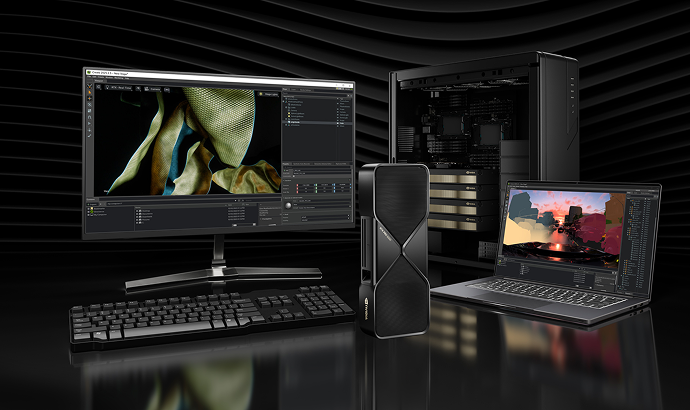

Writing About AI
Uvation
Reen Singh is an engineer and a technologist with a diverse background spanning software, hardware, aerospace, defense, and cybersecurity. As CTO at Uvation, he leverages his extensive experience to lead the company’s technological innovation and development.

The NVIDIA H200 series features two distinct GPU designs: the H200 SXM and the H200 NVL, both utilising the Hopper architecture and 141GB of HBM3e memory per GPU. The H200 SXM is a single GPU module designed for horizontal scalability in standard HGX servers, meaning multiple SXM GPUs can be integrated into one server to share workloads. In contrast, the H200 NVL is a revolutionary design that pairs two H200 GPUs into a single logical unit using NVIDIA’s high-speed NVLink bridge, merging their memory into a unified 282GB pool. This fundamental difference in architecture dictates their ideal use cases, with SXM favouring multi-GPU, horizontally scaled workloads and NVL excelling in memory-intensive tasks requiring a large, unified memory space.
The H200 SXM features 141GB of HBM3e memory per GPU, delivering a memory bandwidth of 4.8 terabytes per second (TB/s) per GPU. When multiple SXM GPUs are used, they have separate memory pools. The H200 NVL, however, unifies the memory of its two internal GPUs via NVLink, creating a massive 282GB shared memory pool. This unified architecture allows for a total memory bandwidth of 9.6 TB/s, effectively doubling the bandwidth of a single SXM GPU. This unified memory pool is crucial for large AI models that exceed the 141GB capacity of a single GPU, as it eliminates the need for complex model splitting and data movement across separate GPU memories, significantly reducing latency and improving throughput for memory-bound applications.
The H200 NVL is optimally suited for memory-bound AI and high-performance computing (HPC) workloads that demand a large, unified memory space and high bandwidth. This includes massive AI models with 70 billion or more parameters, such as GPT-4 or Mixtral, where the entire model can fit within the NVL’s 282GB unified memory. This avoids “model parallelism” complexities and communication delays associated with splitting models across multiple GPUs. It also excels in real-time analytics on huge datasets (e.g., live fraud detection) and graph neural networks, which inherently require extensive and rapid data access. The NVL’s 9.6 TB/s memory bandwidth and unified memory architecture make it ideal for tasks where data volume and speed are critical bottlenecks.
The H200 SXM is advantageous for workloads that benefit from horizontal scaling, cost efficiency, and compatibility with existing data centre infrastructure. It shines in environments where multiple GPUs can process parallel tasks efficiently, such as traditional HPC applications like computational fluid dynamics (CFD) or financial modelling, and in training mid-sized AI models that fit within its 141GB memory or can be effectively sharded across multiple GPUs. Its compatibility with standard NVIDIA HGX servers from major vendors like Dell, HPE, and Lenovo simplifies deployment and allows for gradual expansion by adding more GPUs. For compute-focused tasks where raw processing power is more critical than unified memory, the H200 SXM offers a better performance-per-dollar ratio and is a more budget-sensitive option.
The H200 SXM and H200 NVL have significantly different power and cooling requirements due to their distinct designs. Each H200 SXM GPU consumes up to 700 watts and requires direct liquid cooling, typically supported by standard liquid-cooled NVIDIA HGX servers. The dual-GPU H200 NVL module, on the other hand, consumes approximately 1,200-1,300 watts, demanding advanced cooling solutions like direct-contact cold plates, which offer 2-3 times better heat transfer than traditional methods. Air cooling is insufficient for the NVL’s extreme heat density. Deploying NVL systems entails higher infrastructure costs, requiring stronger power supplies (2,000W+ per module) and often custom server chassis and significant data centre facility upgrades to handle the increased power and cooling demands, making the NVL a more specialised and costly deployment.
The H200 SXM offers horizontal scalability, allowing for system expansion by adding more GPUs. NVIDIA HGX servers, which support 4-8 SXM GPUs linked via NVSwitch, are widely available from various vendors, making deployment straightforward and flexible for distributing workloads. In contrast, the H200 NVL offers vertical scaling by unifying memory within its dual-GPU module. Servers typically accommodate 1-2 NVL modules (2-4 GPUs total), and adding more modules provides additional separate units rather than expanding the unified memory of existing ones. Deployment of NVL systems is more complex, requiring specialised servers from select OEMs like AMAX or Supermicro, built to handle its unique power and cooling needs, making it suitable for single-node supercomputing for massive datasets rather than broad distributed computing.
The H200 NVL module typically comes with a significant premium, costing approximately 40% more than two equivalent H200 SXM GPUs. This higher price point is attributed to the complex NVLink bridge, specialised cooling requirements, and lower production volumes. In terms of accessibility, the H200 SXM is widely available through NVIDIA’s extensive partner network and shipped in standard HGX servers, implying shorter lead times. Conversely, the H200 NVL has limited availability, primarily through select OEMs, and often involves longer lead times due to its custom server requirements and specialised nature. The return on investment (ROI) for the NVL is justified primarily when its unified memory capabilities significantly simplify code and accelerate training/inference times for memory-bound workloads, whereas the SXM offers better performance-per-dollar for compute-heavy and horizontally scalable applications.
An organisation should prioritise the H200 NVL when their primary concern is tackling the “memory wall” for massive AI models (70B+ parameters) or real-time analytics on extremely large datasets. The NVL’s 282GB unified memory and high bandwidth are critical for eliminating performance bottlenecks and simplifying programming for such memory-intensive workloads where the entire model needs to reside within a single logical device. Conversely, the H200 SXM should be prioritised for projects requiring flexible horizontal scalability, better cost efficiency, and compatibility with standard data centre infrastructure. It is ideal for compute-heavy tasks, traditional HPC applications, and AI models that can be efficiently sharded or scaled across multiple GPUs, offering a superior performance-per-dollar for workloads that do not critically depend on a single, unified memory space larger than 141GB. The choice ultimately hinges on the specific memory demands, scaling strategy, and budget constraints of the AI or HPC project.
We are writing frequenly. Don’t miss that.

Unregistered User
It seems you are not registered on this platform. Sign up in order to submit a comment.
Sign up now